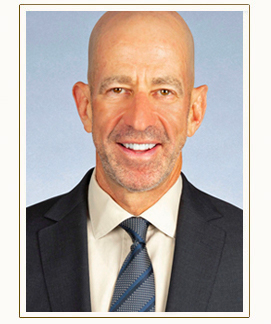By: Bernard A. Krooks, Esq., Certified Elder Law Attorney®
Here’s a question we get asked a lot: “which is better for me to get for my mother — a guardianship or a power of attorney?”
The question itself is misleading, and our answer almost never satisfies. The problem is simple: if your aging parent needs someone to make decisions (medical, financial or otherwise) for him or her, you almost never have a choice about whether to pursue getting a signed document (like a power of attorney) or a court order (like a guardianship). Why not? Because if your parent is able to sign a power of attorney, he or she is probably not a candidate for a guardianship. Conversely, if you could get a guardianship order, your parent probably doesn’t have the legal capacity to sign a power of attorney.
A “guardianship” is a court proceeding in which one person is given decision-making authority over another person’s personal and financial matters. New York even has a procedure for a “consent” guardianship, which would allow the court to appoint a guardian even though the person in question has capacity but is willing to allow appointment of a guardian.
In order to have the court appoint a guardian for someone else, you would need to show, by clear and convincing evidence, that the person you are seeking guardianship for (1) is unable to provide for his or her own personal needs and/or property management and (2) cannot adequately understand and appreciate the nature and consequences of such inability. This determination is primarily based on the person’s functional level and functional limitations.
A power of attorney, on the other hand, does not involve courts at all. Signing a power of attorney is a voluntary act undertaken by an individual with capacity who understands the purpose and effect of his or her signature. As you can see, that is likely not possible for most people for whom a guardian could be appointed.
So the question is usually not which approach would be “better” — it is which approach is possible. If the individual is not able to sign a power of attorney, we usually add our own question to the mix: is getting a guardian appointed the best way to handle the problems that have arisen — is it even necessary to pursue guardianship?
Now pose the question differently. You are an adult with full legal capacity, thinking about your future. You are worried about having someone available and able to take over your personal (health care) and financial decisions if you should become unable to do so yourself. Is it better for you to sign a power of attorney, or should you simply rely on the legal system to establish a guardianship when the time comes for you?
The answer to THAT question is easy, at least in the vast majority of cases. The cost, difficulty, and invasion of your personal dignity involved in a guardianship almost always makes it better for you to sign a power of attorney now, while you can make your own choice. Who should NOT sign a power of attorney? Really only people who have no one trustworthy enough to take responsibility (and there are people in that unfortunate situation — too many people, in our experience) should make a conscious decision to NOT sign a power of attorney.
Notice that we have not distinguished here between health care decisions and financial decisions. That’s because the same values and decisions apply to both. However, in New York, at least, there is one important difference between the two decisions: your next of kin might have the authority to make some health care decisions for you even though you have not signed a health care proxy (and no court proceedings have been initiated). However, family members — even spouses — do NOT have any authority to handle your finances without a power of attorney.
Which is better? If you are in a position to plan for yourself, it is almost always a good idea to choose an agent (you can choose different financial and health care agents, if you’d like) and sign powers of attorney. Do it now — don’t wait until you actually “need” the documents, because that will almost certainly be too late. Don’t rely on your belief that everyone knows what you want — that carries no weight in the legal system, unless it has been reduced to writing.
If you’re facing the problem from the adult child’s perspective, we’re sorry to say that it’s almost never relevant to tell you which approach is “better.” Usually it is a question of which is available. We can help, but it is likely to be more expensive and difficult if your relative didn’t get around to signing a power of attorney.
Learn more about our services by visiting www.littmankrooks.com.
Was this article of interest to you? If so, please LIKE our Facebook Page by clicking here.




